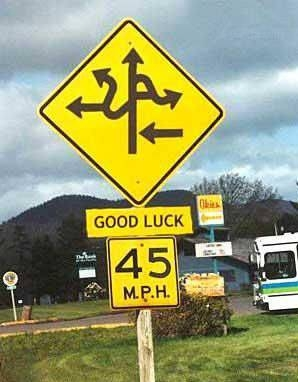The Single Largest Cause of Writer’s Block–Might Not Be What You Believe
Image courtesy of Cellar Door Films WANA Commons
Today, I’d like to talk about the single greatest reason for writer’s block (aside from laziness and fear, but we can chat about those another time). I spent years as an editor, and I believe I’m a pretty good one. I’ve taken stories that were train wrecks and helped the author create a best-seller. Just ask Piper Bayard about Firelands, LOL.
I had a unique ability to pull apart a story and locate what wasn’t working and why. Then I could guide that writer to the best book possible (without altering that writer’s voice). Editing is a skill, but it’s a different skill from creating. For instance, a person who restores historical houses isn’t necessarily someone who can draw a blueprint and build a new house. The restorer looks to the bones of the house and fixes what’s already standing to help create what the owner envisions.
Same with editing. There is less creating and more reverse-engineering.
When I initially began writing fiction, I was shocked how terrible I was at it. Oh, page to page, the writing was lovely. But as a whole? I kept creating mess after mess, a blob with no internal structure that made sense. To make matters worse, I would hit about 30-40, 000 words an hit a WALL. I was paralyzed with no idea how the story should progress.
This, then led to editing and reediting the beginning until I was just ready to throw myself in traffic.
I was blocked.
Was it the wrong story? Was the idea flawed? Oh, let me try something new.
Writing can feel a little like THIS…
Yet, time after time the same thing happened. I’d hit the exact same spot and paralysis would set in. I kept reading craft books and yet, nothing clicked. I’d start some new writing teacher’s program and again. STUCK. I’d hear things like, “Write your ending first” and it just made me want to punch the person who said it.
How is this even possible? Write the ending. RIGHT. After I take my pet unicorn for a ride.
Then I took NYT best-selling author Bob Mayer’s Warrior Writer class. We spent two days doing what he calls a “conflict lock.” I still didn’t get it. Bob kept asking me what kind of protagonist I wanted. Who was she? I had her in mind and yet…the plot ideas would end up so complicated even I didn’t understand what the hell I was talking about.
After some time, I am sure Bob was probably ready to hairlip me. I know I was ready to hairlip myself.
In frustration, Bob finally said the words that changed everything, “Okay, Kristen. Stop talking to me or I will call the cops.”
Kidding!
Bob said, “Forget the protagonist. Let’s start with the antagonist. Who is he and what does he want?”
Image via Flikr Creative Commons courtesy of Robert Ellsworth Tyler
Everything changed, and I finally saw what I was doing wrong. I was creating my hero with no problem. I had to begin with the story problem first or plotting would be next to impossible. Why? I had no idea what the hell my protagonist was trying to SOLVE!
I also was carrying around misguided ideas of what an antagonist was.
She is her OWN worst enemy.
Oooh, a STORM! SOCIETY!
Um, yeah…no.
This set me a on a new course. I stopped writing fiction altogether and threw everything I had into studying antagonists. I read stacks of novels, this time paying attention to the antagonists. I read psychological journals, profiling books, and tore apart every movie I watched (my husband has banned me from speaking during movies). I reverse engineered everything until I understood antagonists from every angle possible.
When most of us start out as baby writers, we only think of antagonists as villains. Buffalo Bill. Easy. But what if we don’t want to write about serial killers? And even if we DO want to write about serial killers, we can’t put the killer in every scene. A villain alone isn’t enough.
Don’t make me toss you in my well….
High body count is still, as Les Edgerton would put it, a bad situation not conflict. Car chases and gun battles are not dramatic tension and can quickly become tedious in movies and books.
As I began to speak at more and more conferences, I saw how far-reaching this problem was. When I’d ask a writer to give me her pitch, I’d get something like this:
Well, it’s about a girl who is half-fairy and in high school, but she doesn’t know she has magic and, wait. Let me back up… Her mom fell in love with a vampire but then her mom had an affair with an evil fae and now their kingdom is in ruin because of werewolves and my character needs to find herself. She keeps having these dreams and there are these journals left by her aunt who was only 1/8 fae….
Kill…me…now *looks for closest wine bar*.
I started to realize what I had done to poor Bob (and I sent a letter of apology and a thank you for not slapping me). But it showed me something critical. Most new writers are backing into the story the wrong way.
With no clear antagonist, it is impossible to know the core story problem in need of resolution by Act Three. It’s impossible to plot (even good pantsers still have to know the story problem). It’s impossible to generate dramatic tension and what we are left with is melodrama….and a great way of getting STUCK at 30,000 words and wanting to kill ourselves and give up being novelists.
As an editor I knew when these elements were missing, but couldn’t articulate my instincts. I had to train and study and read until I got it.
Looking back at all those-half-finished novels, I now know how to fix them because I know what was missing to begin with. The novel I’m revising right now (that I easily finished) is actually one of those works that made it to 40,000 words then *insert sounds of squealing breaks here*.
The antagonist is the beating heart of the story. He/She/It creates the crisis and the crucible that forces our protagonist to become a hero. If we don’t know the endgame, we have no idea how to insert roadblocks, create misdirection, setbacks, or drama. So if you keep getting stuck? It might not be you are lazy or fearful (I wasn’t either). It might be your foundation (the antagonist/core story problem) either isn’t there or it’s weak and unable to support the bulk of 65-100,000 words.
I am offering an on-line class on antagonists next Friday. Use the code WANA15 for 15% off, and the class is recorded if you can’t make the actual window. But, if you want other resources you can read on your own (check out of the library), some great references are:
Plot and Structure by James Scott Bell
Hooked by Les Edgerton
Bullies, Bastards and Bitches by Jessica Morrell
The Sociopath Next Door by Martha Stout PhD
The DSM-V (The Diagnostic and Statistical Manual of Mental Disorders 5th Edition)
Anatomy of Motive by John Douglas, the father of modern profiling
Take one of Bob Mayer’s workshops or Les Edgerton or even James Scott Bell. They are fabulous teachers.
Yet, if you are stuck, take heart. You might not be lazy or scared, you might just need some foundation repair  . Good news is most stories can be fixed, just might take a lot of elbow grease. Yet, once you are finally headed in the right direction? That’s when the magic can happen.
. Good news is most stories can be fixed, just might take a lot of elbow grease. Yet, once you are finally headed in the right direction? That’s when the magic can happen.
What are your thoughts? What other books would you add to my list? Have you gotten stuck?
I LOVE hearing from you!
To prove it and show my love, for the month of July, everyone who leaves a comment I will put your name in a hat. If you comment and link back to my blog on your blog, you get your name in the hat twice. What do you win? The unvarnished truth from yours truly. I will pick a winner once a month and it will be a critique of the first 20 pages of your novel, or your query letter, or your synopsis (5 pages or less).
NOTE: My prior two books are no longer for sale, but I am updating them and will re-release. My new book, Rise of the Machines–Human Authors in a Digital World is NOW AVAILABLE.









